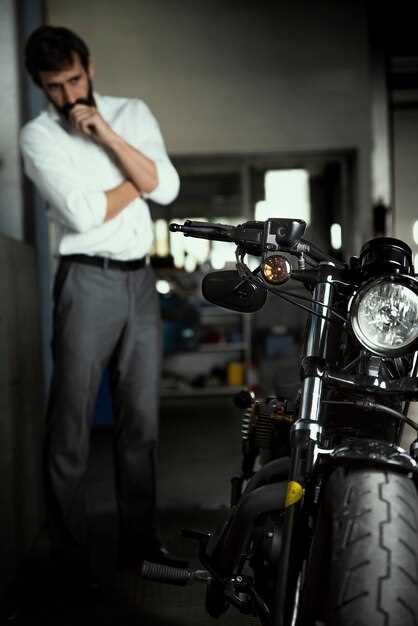
Motorcycles are a popular mode of transportation and recreation, offering freedom and excitement on the open road. However, like any machine, they can experience various issues over time. Understanding common motorcycle problems can help riders take proactive measures and ensure their bikes remain in optimal condition. By identifying these issues early, motorcyclists can avoid costly repairs and enjoy a smoother ride.
This article explores some of the most frequent problems faced by motorcycle owners, along with practical DIY repair solutions. From electrical issues to mechanical failures, being equipped with the right knowledge can empower riders to tackle repairs confidently. Whether it’s a simple flat tire or a more complex engine issue, knowing how to troubleshoot and repair your motorcycle can save both time and money.
Additionally, we’ll cover essential tips on maintenance and preventive measures to reduce the likelihood of encountering these issues in the first place. With the right tools and a bit of patience, even novice riders can handle many common repairs. Let’s dive into the world of motorcycle repair and explore ways to keep your bike running smoothly and reliably.
Diagnosing Electrical Issues in Motorcycles
Electrical problems in motorcycles can manifest in various ways, including starting issues, flickering lights, and malfunctioning indicators. Troubleshooting these issues requires a systematic approach to identify the root cause effectively.
First, check the battery condition. A weak or dead battery is a common culprit behind electrical failures. Use a multimeter to measure the voltage; it should read around 12.6 volts when fully charged. If the battery is faulty, consider replacing it or ensuring proper charging.
Next, inspect the wiring harness for signs of wear or damage. Look for frayed wires, corroded connectors, or loose connections. Clean any corroded terminals and ensure that all connections are secure. A reliable connection is essential for proper electrical flow.
Fuse issues can also lead to electrical malfunctions. Inspect the fuse box for any blown fuses and replace them as necessary. Be sure to identify any underlying issues that may have caused the fuse to blow in the first place.
Another critical component to check is the ignition system. Ensure the ignition switch is functioning correctly and that all associated wiring is intact. A faulty ignition system can prevent the motorcycle from starting or cause intermittent electrical problems.
Lastly, if all other components appear to be functioning well, test the regulator/rectifier. This part is responsible for converting the AC voltage generated by the alternator into DC voltage to charge the battery. A malfunctioning regulator can lead to overcharging or undercharging the battery, causing various electrical issues.
By following these steps, you can effectively troubleshoot and repair common electrical issues in motorcycles, ensuring a smooth and safe ride.
Resolving Engine Performance Problems

When your motorcycle experiences engine performance issues, it can lead to decreased power, poor fuel efficiency, or rough idling. Understanding the common causes and DIY repair solutions can significantly enhance your riding experience.
One prevalent issue is a clogged air filter. A dirty air filter restricts airflow to the engine, making it work harder and reducing performance. To resolve this, locate the air filter, remove it, and clean or replace it according to your motorcycle’s specifications.
Another common cause of engine performance problems is a faulty spark plug. Worn or dirty spark plugs can fail to ignite the fuel properly, leading to misfires and sluggish acceleration. Inspect the spark plugs for wear and replace them if necessary, ensuring you use the correct type for your motorcycle.
Fuel-related issues can also hinder engine performance. Old or contaminated fuel can lead to poor combustion. To address this, consider draining the fuel tank and replacing it with fresh gasoline. Additionally, if your motorcycle has a fuel filter, check it for clogs and replace it as needed.
Carburetor or fuel injector problems can further contribute to performance decline. If your motorcycle is equipped with a carburetor, ensure it is clean and properly tuned. For fuel-injected models, running a fuel system cleaner through the system can help remove deposits and improve performance.
Lastly, ensure that the motorcycle’s exhaust is not blocked or leaking, as this can impact engine output. Inspect the exhaust system for any visible damage or obstructions, and address any issues you find. Regular maintenance and prompt repairs will help keep your motorcycle running smoothly.
Fixing Brake and Tire Maintenance Challenges

Motorcycle maintenance is crucial for safety, and addressing brake and tire issues is paramount. Understanding how to troubleshoot these components can save you time and money while ensuring a smoother ride.
Brake Problems: One common challenge is the brake lever feeling spongy. This might indicate air in the brake lines. To fix this, you’ll need to bleed the brakes. Start by elevating the motorcycle and using a suitable tool to open the bleeder valve on each brake caliper. Pump the brake lever until you notice a firm resistance, then close the valve. Repeat until no bubbles appear in the brake fluid.
Another issue could be squeaking or grinding noises when applying the brakes. This typically signals worn brake pads. Inspect the pads and replace them if they are below the minimum thickness. Ensure that you always use manufacturer-recommended pads for optimal performance.
Tire Maintenance: Tire wear patterns can indicate alignment or suspension issues. Uneven wear suggests that your motorcycle’s alignment may be off, requiring adjustments to the handlebars or wheel. Regularly checking tire pressure is also essential as under-inflated tires can lead to decreased performance and increased wear.
If you notice a flat tire, begin by checking for punctures or damage. Use a tire repair kit for minor holes, but if the sidewall or major tread is compromised, a replacement is necessary. Ensure the new tire matches the recommended specifications for your motorcycle.
Routine inspection of the brakes and tires can prevent most issues. Regular cleaning and maintenance not only enhance performance but also extend the lifespan of these crucial components.

